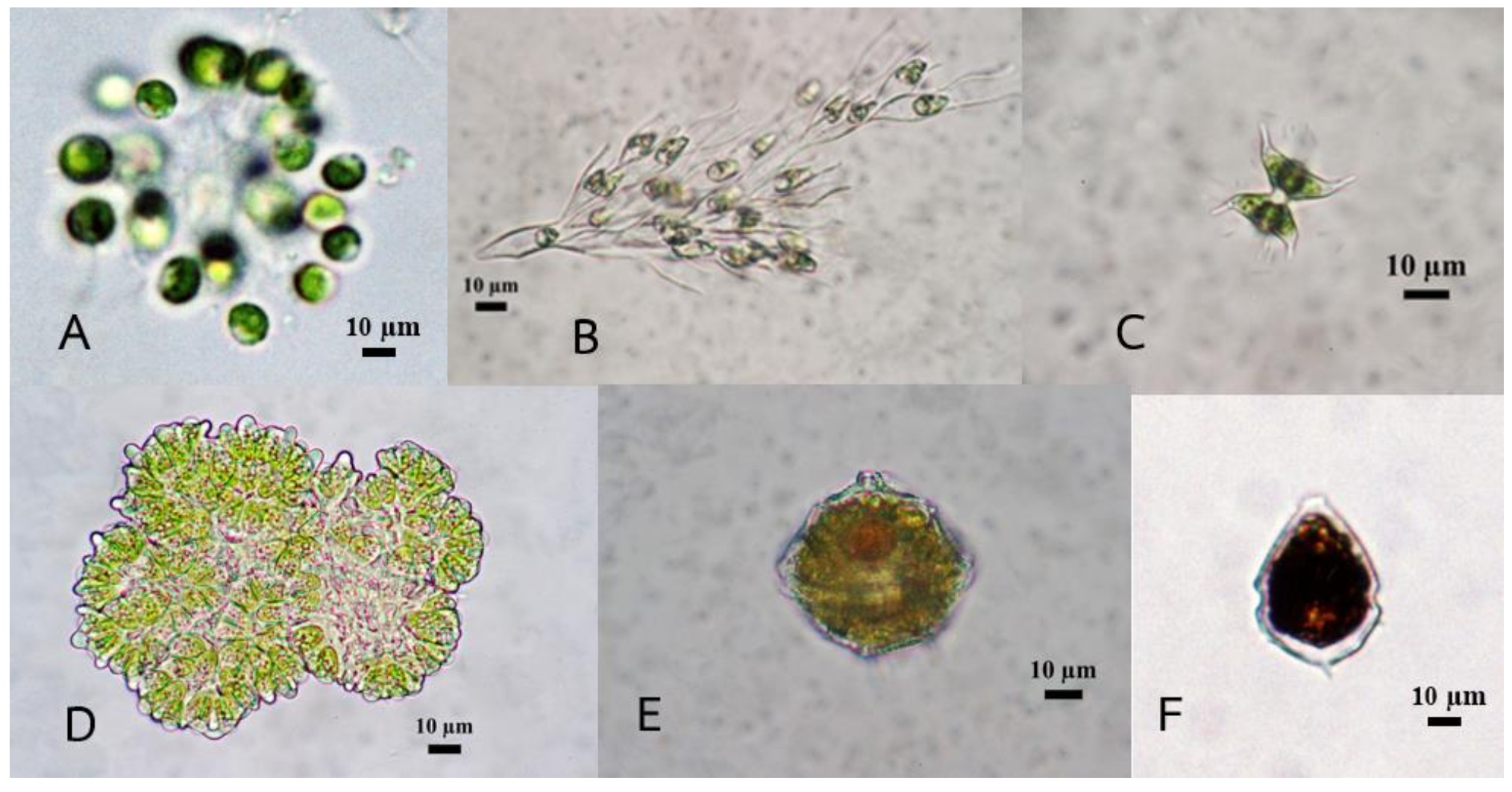Study on Phytoplankton Diversity for Using as Indicator of Water Quality in Water Reservoir at Chiang Rai Rajabhat University
Main Article Content
Abstract
Classification species, quantity and diversity of phytoplankton were studied for using phytoplankton as an indicator of water quality in the water reservoir at Chiang Rai Rajabhat University. The samples of phytoplankton were collected monthly from December 2017 to March 2018 at five stations. All phytoplankton were found including six divisions, seven classes, fourteen orders, twenty-two families and sixty-five species. The greatest number of species were in Division Chlorophyta (thirty-five species), followed by Chrysophyta (ten species), Euglenophyta (ten species), Cyanophyta (six species), Pyrrophyta (five species) and Cryptophyta (one species). The diversity index revealed that the highest values were recorded in February at station five (2.75) and the lowest were recorded at first station (0.82). The richness index revealed that the highest values were recorded in March at second station (6.51) and the lowest were recorded in February at first station (1.88). The evenness index revealed that the highest values were recorded in February at station five (0.71) and the lowest were recorded at first station (0.30). Dominant phytoplankton species comprised Dictyosphaerium granulatum Hindák, Peridiniopsis sp., Botryococcus braunii Kützing, Dinobryon divergens O.E. Imhof, Peridinium sp.2 and Staurastrum sp.2. Water quality was assessed using AARL–PP score dominant phytoplankton method. It was found that the water quality was moderate nutrient levels (Mesotrophic) equivalent to medium water quality. The amount of chlorophyll a was in the range about 2.6 - 38.5 micrograms per liter. When assessing the fertility type of water resources, most of them were classified as medium water sources (Mesotrophic).
Article Details
References
กิกิตติชัย จันธิมา. 2561. นิเวศวิทยาสิ่งแวดล้อม. มหาวิทยาลัยราชภัฏเชียงราย, เชียงราย.
ประเสริฐ ไวยะกา. 2555. แพลงก์ตอนพืชในพื้นที่ชุ่มน้ำหนองหลวง. มหาวิทยาลัยราชภัฏเชียงราย, เชียงราย.
ยุวดี พีรพรพิศาล. 2549. สาหร่ายวิทยา. มหาวิทยาลัยเชียงใหม่, เชียงใหม่.
ยุวดี พีรพรพิศาล. 2558. สาหร่ายน้ำจืดในประเทศไทย. โชตนาพริ้นท์ (พิมพ์ครั้งที่ 3), เชียงใหม่.
ลัดดา วงศ์รัตน์. 2542. แพลงก์ตอนพืช. มหาวิทยาลัยเกษตรศาสตร์, กรุงเทพมหานคร.
Ngearnpat, N., B. Klayluk, A. Kumla, S. Ngamta and K. Issakul. 2018. Phytoplankton Composition and
Water Quality of Kwan Phayao Reservoir, Thailand, during Rainy and Cold Dry Seasons. Journal of Food Health and Bioenvironmental Science (May-August 2018). 11(2) : 46 - 55.
Niles, R.K., D.L. King and R. Ring. 2011. Lake classification system Parts I and II. Available:
http://mymlsa.org/wpcontent/uploads/2011/06/LAKE_CLASSIFICATION_SYSTEMS_Parts_1_and_2.pdf. Accessed March 20, 2018.
Prasertsin, T., S. Yavichai and C. Pingmano. 2018. Diversity of Phytoplankton and Water Quality in Mae Suai Reservoir During the Rainy Season. Science and Technology RMUTT Journal. 8(1) : 184 - 199.
Saijo, Y. 1975. A method for determination of chlorophyll. Japanese Journal of Limnology.
: 103 - 109.
Wintermans, J.F.G.M. and A. De Mots 1965. Spectrophotometric characteristics of chlorophyll a and b
and their pheophytins in ethanol. Biochimica Biophysica Acta. 109 : 448 - 453.


